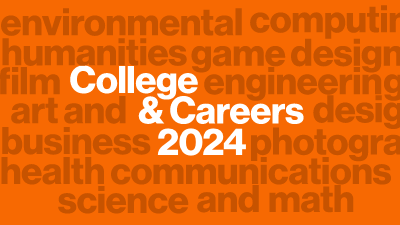Science of Film, Photography, and Imaging Immersion - Curriculum
Science of Film, Photography, and Imaging Immersion
| Course | |
|---|---|
| Required Course | |
| SOFA-103 | Introduction to Imaging and Video Systems This course provides an introductory overview of the basic engineering and scientific principles associated with imaging systems. Topics covered include imaging physics, photographic science, human vision and perception, image capture and display technologies (both analog and digital), and digital image processing. This course is taught using both mathematical and phenomenological presentation and prepares students to proceed with more in-depth investigation of these fields in subsequent imaging science and motion picture science courses. Accompanying laboratory exercises provide hands-on experience with the presented concepts. (Co-requisite: MATH-171 or MATH-181 or MATH-181A or equivalent course.) Lab 3, Lecture 2 (Fall or Spring). |
| Electives | |
| Choose two of the following: | |
| IMGS-221 | Vision & Psychophysics This course presents an overview of the organization and function of the human visual system and some of the psychophysical techniques used to study visual perception. (This course is restricted to IMGS-BS, DIGCIME-BS, IMGS-MN and SCIMGS-IM students.) Lecture 3 (Fall, Spring). |
| IMGS-261 | Linear and Fourier Methods for Imaging This course develops the concepts of complex numbers and linear algebra for describing imaging systems in the frequency domain via the discrete and continuous Fourier transforms. (Prerequisite: MATH-173 or MATH-182 or MATH-182A or equivalent course.) Lecture 4 (Spring). |
| IMGS-321 | Geometric Optics This course introduces the analysis and design of optical imaging systems based on the ray model of light. Topics include reflection, refraction, imaging with lenses, stops and pupils, prisms, magnification and optical system design using computer software. (Prerequisites: PHYS-212 or equivalent course.) Lab 3, Lecture 2 (Fall). |
| IMGS-341 | Interactions Between Light and Matter This course introduces the principles of how light interacts with matter. The principles of atomic physics as applied to simple atoms are reviewed and extended to multi-electron atoms to interpret their spectra. Molecular structure and spectra are covered in depth, including the principles of lasers. The concepts of statistical physics concepts are introduced and applied to the structure of crystalline solids, their band structure and optical properties. These concepts are then used to understand electronic imaging devices, such as detectors. (Prerequisite: PHYS-213 or equivalent course.) Lecture 3 (Spring). |
| IMGS-351 | Fundamentals of Color Science This course will introduce students to the field of Color Science. Students will learn about the physical sources of color, the visual mechanisms that provide our experience of color, and the descriptive systems that have been developed for relating the physical and visual properties. Through hands-on projects, students will learn practical methods for measuring, modeling, and controlling color in digital imaging systems. (Prerequisites: SOFA-103 or equivalent course.) Lecture 3, Recitation 2 (Fall). |









